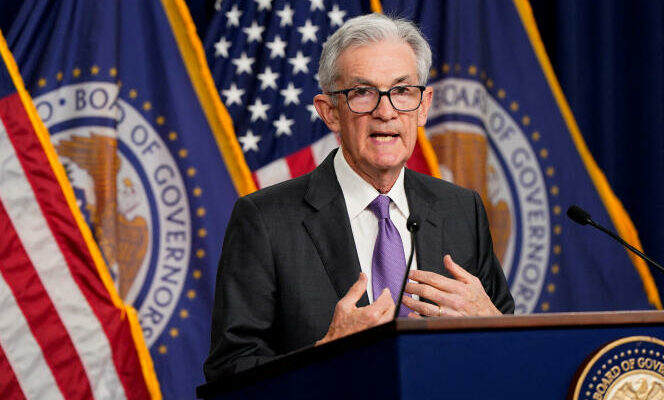The American Federal Reserve (Fed) maintained, Wednesday 1er May, its interest rates unchanged at the end of its last meeting, reporting the“lack of progress” recent news on the inflation front. However, it announced that it will deflate the volume of assets on its balance sheet more slowly from June.
The American central bank has left its rates at the highest in more than twenty years, between 5.25% and 5.5%, a range within which they have been moving since July, it announced. in a press release. This has the effect of keeping interest rates on home loans, credit cards, car loans, etc. high, in order to prevent prices from continuing to soar.
The Monetary Policy Committee specifies that “In recent months there has been a lack of further progress towards the committee’s target of 2% inflation”. Inflation seemed on track to gradually reach its 2% target. But since January, it has started to rise again, to 2.7% over one year in March, according to the basic price index of personal consumption (PCE), favored by the Fed and which it wishes to bring back to 2%, and 3.5% according to the consumer price index (CPI).
During a press conference following a monetary meeting where the Fed decided to leave rates as they are, Federal Reserve Chairman Jerome Powell warned that it would probably be necessary to “more time than expected” before having confidence that inflation will fall, implying that rates will remain high for longer. Mr. Powell noted, however, that he was “unlikely that the next move on rates will be an increase”monetary policy being judged “sufficiently restrictive” over time.
The markets, which were full of hope of seeing rates start to fall in June, are now betting instead on September, or even November, according to the CME Group estimate. “The Fed will need several months of good news on wage growth and inflation”notes Nancy Vanden Houten, economist for Oxford Economics.
Easing of monetary policy
The Federal Reserve, however, is marking the beginning of an easing of monetary policy: it announced on Wednesday that it will reduce the volume of assets on its balance sheet more slowly, starting in June. The American job market also remains too tight for the Fed’s liking. The official figures for April will be published Friday, May 3, but companies in the private sector alone created 192,000 jobs in April, according to the monthly ADP/Stanford Lab survey published Wednesday.
Finally, the employment cost index was much higher than expected in the first quarter, “suggesting that wage deceleration has stopped, at least temporarily”notes Krishna Guha, economist for Evercore, an investment consulting company.
Although the Fed is independent of political power, the evolution of interest rates, and prices, in the United States is a particularly sensitive subject in this election year, while the president candidate Joe Biden initially tried to focus his campaign on the success of his economic policy. The November vote will be held the day before a meeting of the Monetary Policy Committee.
